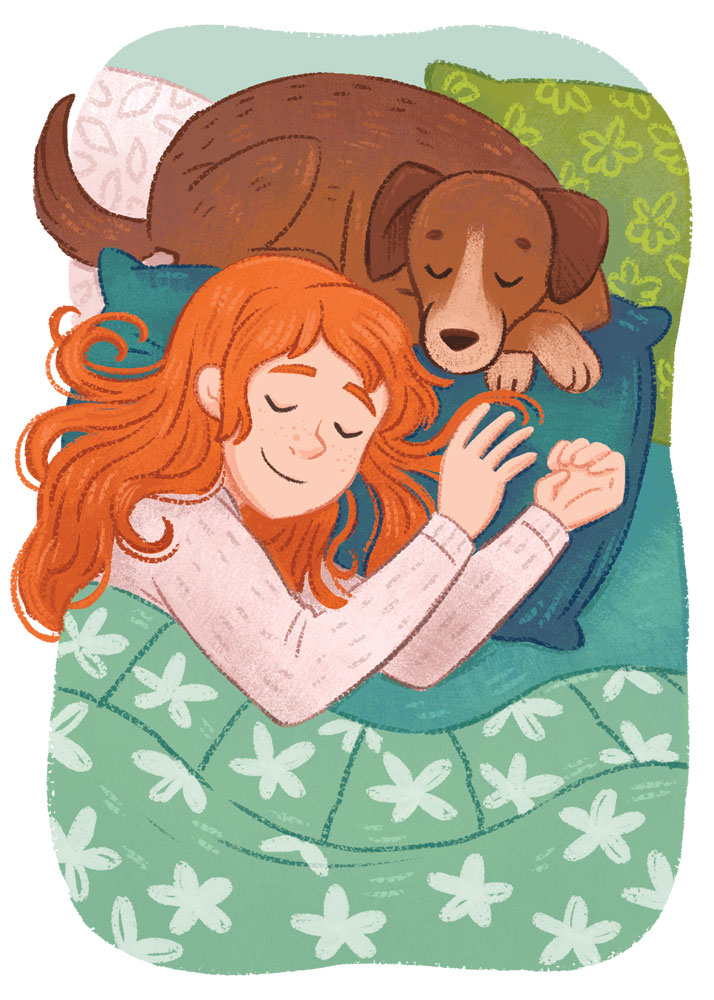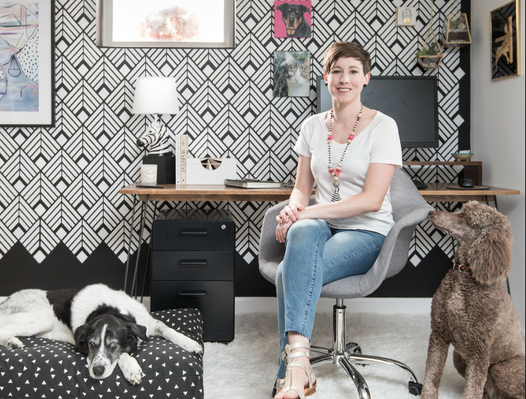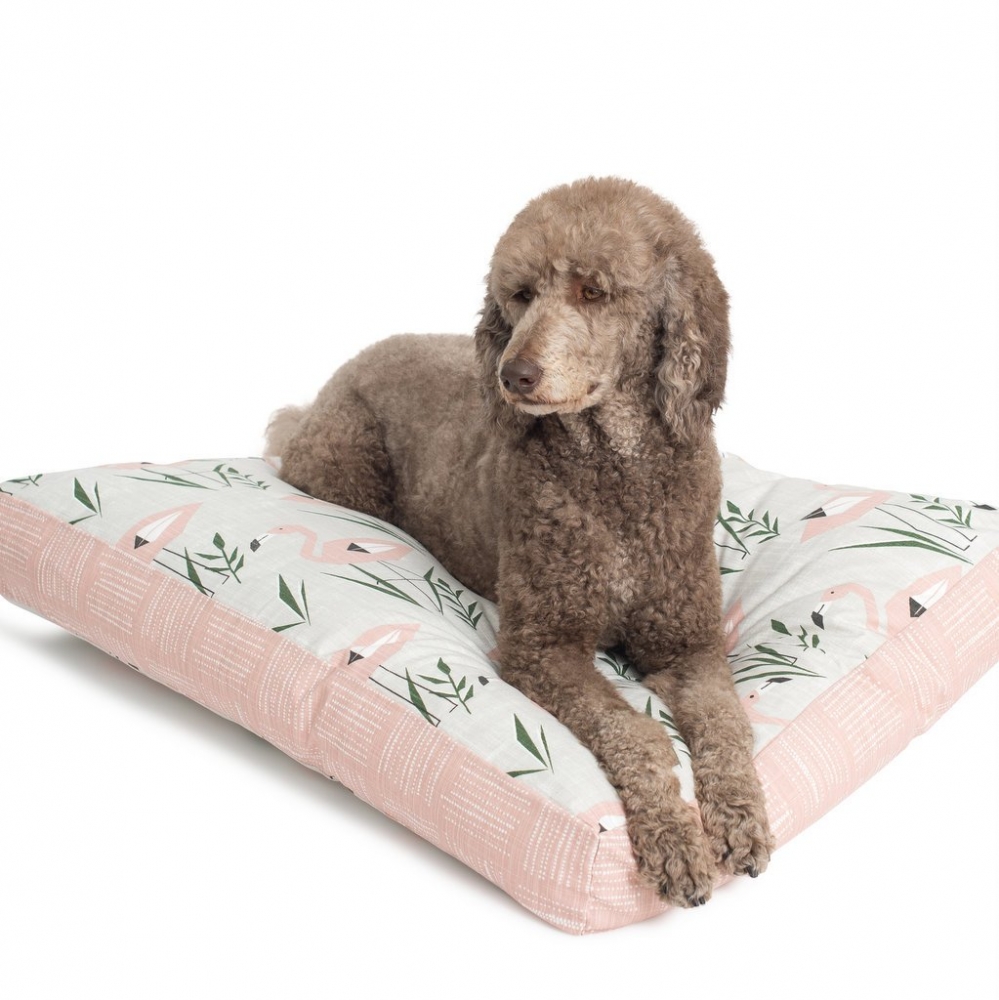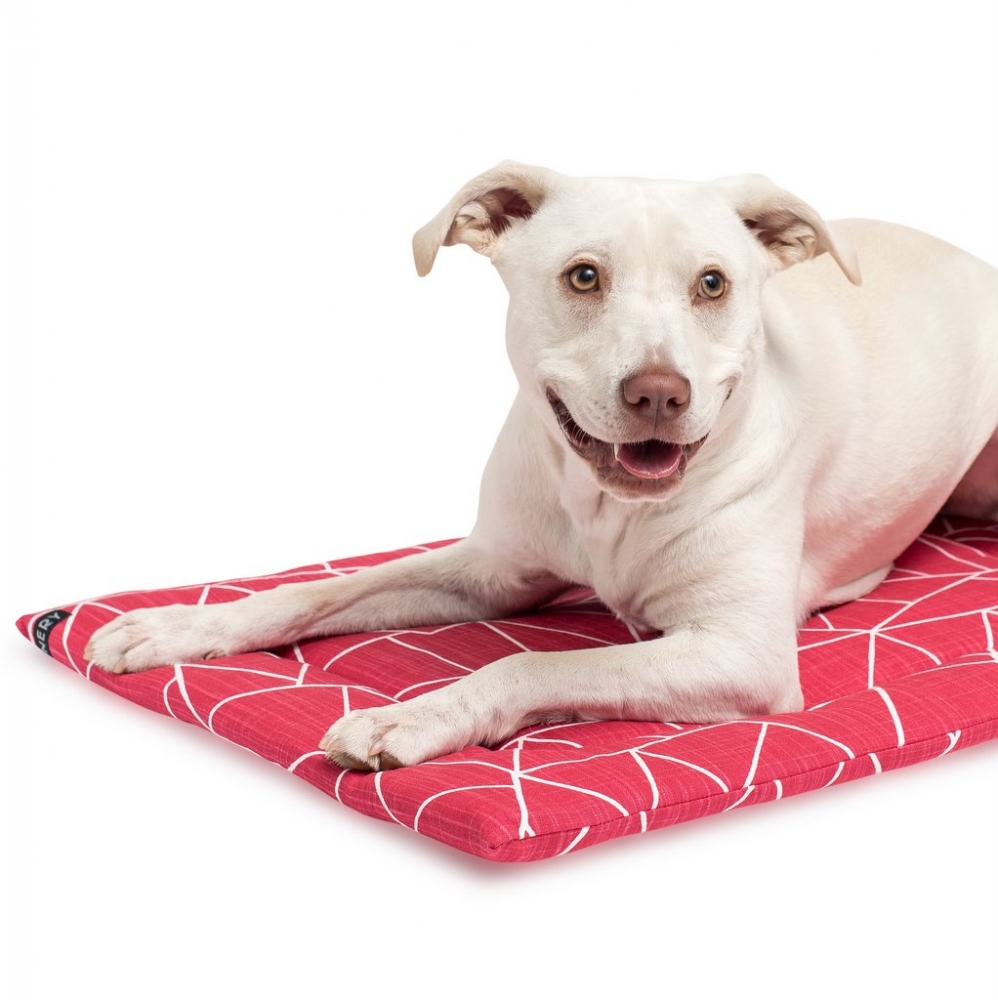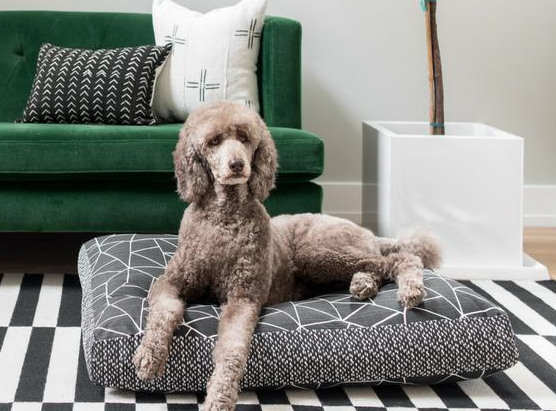- Dog CareDog LifeCommunity
- Photo Contest
Photo Contest- Giveaways
Sleeping With Dogs
Tesla, an Entlebucher Mountain Dog, slept with her owner, Christena Stephens, for 10 years. She became such a fixture in Stephens’ bed that when the Lubbock, TX resident travelled, “the sleeping comfort was not there because Tesla was not there,” she says. “When I lost Tesla, my sleep patterns changed from peaceful to restless. Perhaps Tesla knew more what I needed in those 10 years than I did.”
Although much smaller, Pomeranian Bella was as much a source of comfort to her owner, Karen Peters, as Tesla was to Stephens. Brought home at 10 weeks, Bella cried in her kennel, so Peters and her husband put the tiny puppy in a laundry basket between them. The other dogs they’d had would sleep with their children, but “we both loved having Bella share our California king-sized bed with us,” says Peters.
“Many puppies come home at eight weeks of age where they are in a developmental period,” says Melissa Millett, founder and professional dog training instructor at In Dogs We Trust out of London, ON. “When they are placed in another room, they will whine, cry, and scream. This is resolved when they are in the same room as the family. Puppies are still babies, after all.”
Peters and Stephens are not alone. A recent study found that 55% of pet owners welcomed their dogs in their beds. No longer relegated to the doghouse—or even the floor—pet owners are inviting their dogs into their beds, and there are benefits for both, says Millett, who has been featured on every major Canadian TV network and on shows internationally (she also trains animals for film and TV). “Personally, I have six to seven dogs in my bed at night,” she says. Both newly rescued and adopted dogs, like Bella, and working dogs, are more deeply bonded when they sleep in the same room as their humans, says Millett. Peters agrees: “We [had] a very close relationship with Bella because of sharing our bed.”
Humans and dogs have been sleeping together for centuries. The expression “three dog night” means a night so cold that you need three dogs to keep you warm. Some say the phrase originated in the Australian Outback, while others point to Alaska or Siberia as the source.
“As social animals, dogs tend to stay close to the individuals they are attached to,” says Dr. Carlo Siracusa, associate professor of Clinical Animal Behavior and Welfare and director of the Animal Behavior Service at the University of Pennsylvania. But whether a dog wants to share a bed with his or her human depends on the dog. “There is a significant individual variability and not all dogs may enjoy sharing a bed with another individual,” Siracusa says. “Some dogs may enjoy the bed itself (comfy and warm), but not necessarily people moving or making noises at night.”
Sleeping with pets goes way back to our ancestors. “I do think that one of the advantages of having a dog close… may have been protection from animal attacks,” says Siracusa, whose research interests are focused on canine stress evaluation and control, temperament evaluation, prognostic factors, and treatment outcome of behaviour problems, and behaviour and cognitive changes in dogs with medical disease. Although we don’t need this protection in modern society, people are still comforted by having their pets close.
“Both humans and dogs may find sleeping together comforting and it may be easier for them to fall asleep,” says Siracusa. “It also helps pets to sleep, especially those dogs that are particularly attached to their caregivers and may suffer anxiety when separated from them.”
A study called The Effect of Dogs on Human Sleep in the Home Sleep Environment—in which researchers at the Mayo Clinic in Phoenix, AZ assessed whether a dog in the bedroom or bed disturbs sleep—found that a dog’s presence in the bedroom may not be disruptive to human sleep. Research showed that people slept slightly better when the dog was off the bed, while dogs slept the same whether they were on the bed or in another location in the bedroom—proximity to their owners was the key.
Danielle Merkle’s Labrador-Collie-Malamute mix, Kayden, has a crate in Merkle’s room, as well as beds scattered throughout the house, but has been sleeping with Merkle since she adopted him.
“I think it is important for your dog to have their own space, like a crate,” says the Clinton Township, MI resident, but gives her dog the choice of where to sleep. Having Kayden in her queen-sized bed benefits them both. “Sometimes, if he falls asleep in his crate, I don’t fall asleep until he comes up on the bed,” she says.
Christa Schaupmeyer of Lethbridge, AB also has sleeping spaces—dog beds, mats, and crates throughout her home—for each of her three Labradoodles. “It is nice to know that the dogs will sleep in a kennel if you need to travel or if there was any emergency and you were out of your routine,” says Schaupmeyer. Still, all three dogs find themselves in bed with Schaupmeyer, and she wouldn’t have it any other way.
For many pet owners, co-sleeping is not as simple as having a dog climb into bed with them. Some will go out of their way to ensure their pets are treated as first-class guests.
Spring Grove, VI’s June Richardson goes above and beyond for her dog, Dakota. The Catahoula has her own pillow, and Richardson reads her bedtime stories. Favourites include “The Three Little Pigs,” “Goldilocks and the Three Bears,” and various Christmas stories. Andrea Cserenyi of Boston, MA has also gone to great lengths to ensure the comfort of her Pekingese, Mick. She’s set up a dog ramp at the foot of the bed to allow him to get on and off the bed at leisure, and because he likes the cold, he has a dog bed with an ice pack lining at the top of the bed. “The top 12 to 18 inches of the bed are free for Mick,” says Cserenyi. “He spends most of the night just above my head.”
Mick returns the favour by snoring away—something that actually helps Cserenyi, who suffers from clinical insomnia. “When I wake up during the night I reach up, give Mick a few pets and try to fall asleep with my hand resting on his fur.”
55% of adult women surveyed said they share their bed with at least one dog.
So, should you share a bed with your pet? Many professionals feel that it is a personal choice, says Millett. “Sometimes, clients will sheepishly share with me that the dogs sleep in their beds,” she says, “thinking that perhaps I will tell them that the dog will come to view themselves as an equal and attempt to take over the pack. As a positive reinforcement trainer, I do not believe that dogs are vying to take over the pack, or that co-sleeping, allowing animals on furniture, exiting doorways first, or eating in any specific order has an effect on your dog’s behaviour.”
Siracusa agrees. As a general rule, when both humans and pets are happy to share the bed, there is nothing wrong with it, he says. But if it isn’t working for one of the parties —perhaps the dog or its owner just can’t get comfortable—“a good compromise is to have the (pet) sleep on the floor immediately beside the bed, or on an elevated surface next to the bed,” says Siracusa. “This is actually something we quite often recommend, and it has been proven that this slightly improves sleep quality.”
After years of fitful rest without Tesla, Stephens’ peaceful sleep returned with Castiel, another Entlebucher. “Cassie starts off sleeping right against me and then moves to the centre of the bed,” says Stephens. “Maybe she senses that I need that initial comfort while starting to drift to sleep.”
This article originally appeared in the award-winning Modern Dog magazine. Subscribe today!
5 Ways To Help Your Dog Feel Like They Belong
Helping new pets feel at home is a bit of an art form, and no one knows that better than Jane Pearson, owner and mastermind behind Janery, a designer pet bed company focusing on style, function, and ethical manufacturing. Inspired by her rescued dog, Charlie, Jane’s soft spot for animals now give pets a soft place to land–with pet beds pretty enough to place in every room.
She offers the following tips for helping your new dog feel welcome in their new home.
Embrace the form.
Dog beds get relegated to dark corners for lots of reasons, since they are traditionally kind of frumpy–and that’s putting it nicely. The more the bed looks and feels like a beautiful accessory in the space, the more your dog will feel like he belongs, too.
Keep it fresh.
If there’s one thing pet owners have in common, it’s a love of animals–and an aversion to a house that smells like them. Seek out beds with waterproof, odor-resistant liners and modern, washable, upholstery-weight fabrics that can withstand wear. One way to make pets comfortable and welcome in every room is by providing a conveniently-placed bed that complements your decor, so they aren’t compelled to hang out on your furniture.
Find what fits their needs.
Pets come in different sizes and shapes, and they all sleep differently. If you are wondering how to find the right size dog bed, pay attention to their position. Some small dogs like to stretch, some big dogs like to curl into a small donut, and some dogs don’t like to sleep alone. Your dog’s weight is a good starting point for choosing the right bed, but his sleep shape matters just as much.
Create consistency.
Firm rules and structure help dogs know where they fit in and how to function happily in the family. Finding a dog bed that works–and sticking with it–gives your dog a sense of security. While cheaper, conventionally manufactured dog beds aren’t meant to last; the filling gets bunched, the seams rip, and most fabrics can’t be washed effectively. Think about how you’d feel if someone kept switching out your mattress just as you got comfortable–it’s not a great feeling.
Give some space.
While it’s important to help your pet feel at home, it’s just important to give them their own space. Give your new dog a stylish-yet-functional dog bed next to a couch or tucked in the corner, so pets are close enough where they feel like they are in on the action, but far enough away to get a rest if they need it. Lightweight washable pet mats can also help cover sofas and chairs for pets who are invited up.
Of course, even if you find the perfect dog bed and put it in the perfect spot, it may take some time for your dog to make an instant connection to your home. Rest assured, this transition phase will pass, and it won’t be long before you–and your dog–can’t remember a time when you didn’t belong together.
Dogify Your Inbox
Sign up for the FREE Modern Dog Magazine newsletter & get the best of Modern Dog delivered to your inbox.
"*" indicates required fields
By clicking the arrow, you agree to our web Terms of Use and Privacy & Cookie Policy. Easy unsubscribe links are provided in every email.
